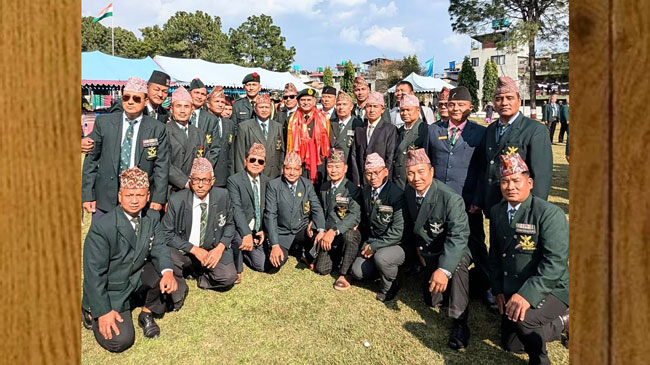Kathmandu: Indian Army Chief General Upendra Dwivedi Concludes Nepal Visit, Gorkha Recruitment Issue Unresolved.Indian Army Chief General Upendra Dwivedi concluded his five-day official visit to Nepal on Sunday, aimed at bolstering bilateral defense cooperation and cultural ties between the two nations. While the visit was termed successful, it failed to bring clarity on the resumption of Gorkha soldiers’ recruitment, which has been stalled for four years. An official statement from the Army stated, “The visit went beyond its set objectives, underscoring the shared commitment to peace, security, and partnership between the two militaries.”
High-Level Meetings but Silence on Gorkha Recruitment
During his visit, General Dwivedi met with Nepalese President Ramchandra Paudel, Prime Minister K.P. Sharma Oli, Defense Minister Manbir Rai, and Nepal Army Chief General Ashok Raj Sigdel. However, no official statements or media reports addressed the stalled recruitment of Gorkha soldiers. Nepalese media reported that Prime Minister Oli emphasized strengthening bilateral cooperation. The visit came at a time of strained India-Nepal relations, with China’s growing influence in Nepal adding to India’s concerns.
Gorkha Recruitment Dispute
Gorkha recruitment has been on hold since 2020, initially due to the COVID-19 pandemic and later due to India’s introduction of the Agnipath scheme in 2021. Under this scheme, soldiers are recruited for a four-year term, with only 25% retained for permanent service. Nepal has raised objections to the scheme, calling it a violation of the 1947 tripartite agreement between India, Nepal, and Britain. Concerns were also raised about the post-service employability of Gorkha soldiers after their four-year tenure. Currently, around 32,000 Nepalese Gorkha soldiers serve in the Indian Army. Since 2020, approximately 15,000 have retired, with no new recruitment taking place. Previously, annual recruitment from Nepal ranged between 1,500 to 1,800 soldiers.
At the time of India’s independence, 90% of soldiers in Gorkha battalions were from Nepal, and the rest were Indians. The current ratio stands at 60:40. Among suggestions to address this situation, military circles have proposed gradually reducing the number of Nepalese Gorkhas in favor of increasing Indian Gorkhas. The Indian Army’s Gorkha Brigade comprises 39 battalions under seven infantry regiments: 1 GR, 3 GR, 4 GR, 5 GR, 8 GR, 9 GR, and 11 GR. The Brigade’s history dates back to April 1815, when the 1 GR was formed under the Bengal Army of the East India Company. The 11 GR is the only regiment established post-independence, comprising Gorkha soldiers who opted to remain with India instead of joining the regiments allocated to Britain.
China’s Growing Influence Overshadows Historic Ties
The recruitment of Gorkha soldiers has been a cornerstone of India-Nepal military ties. However, China’s increasing involvement in Nepal has strained this relationship. In recent years, China has provided arms and vehicles to the Nepalese Army and sought to integrate Nepal into its Belt and Road Initiative (BRI). Additionally, the border dispute at the India-Nepal-China tri-junction has added to regional tensions.
India-Nepal Military Cooperation
India has long supported the modernization of Nepal’s military by supplying equipment and training. India has provided Nepal with Dhruv and Cheetah helicopters, INSAS rifles, and mine-protected vehicles. The tradition of honoring the Nepal Army Chief as an honorary General of the Indian Army, and vice versa, highlights the historic camaraderie between the two countries.
While General Dwivedi’s visit was deemed successful in strengthening bilateral ties, the unresolved Gorkha recruitment issue remains a significant challenge in India-Nepal defense relations.




